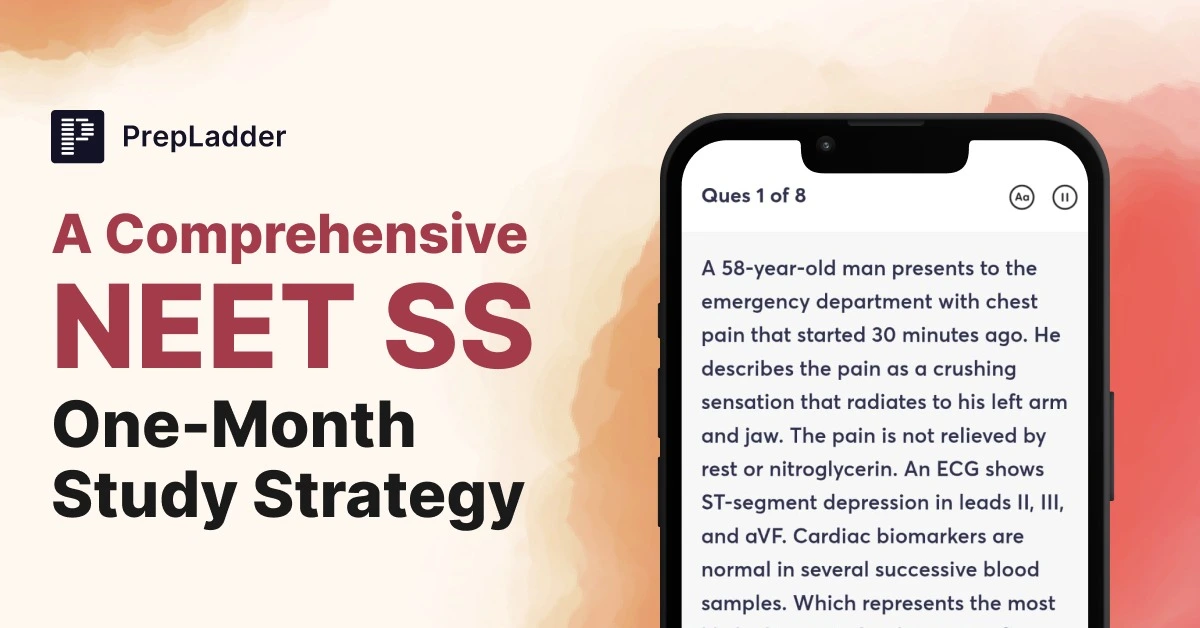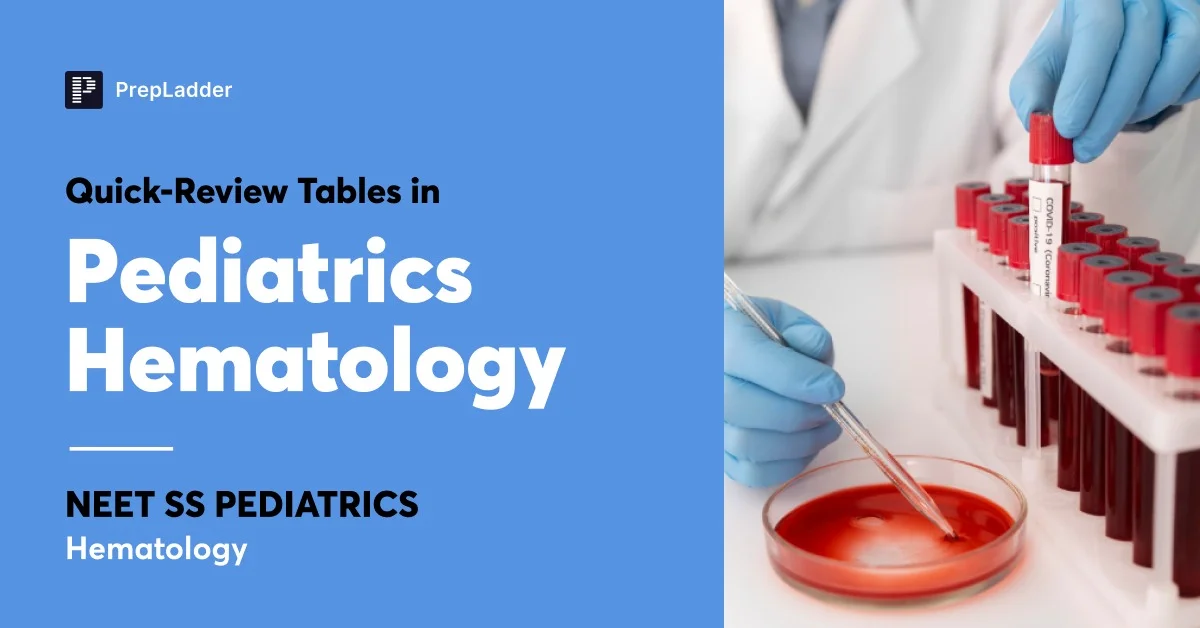Unlock Efficiency and Maximize Your Study Output
PrepLadder’s NEET SS pediatrics PYQs are an invaluable resource that enhances one’s understanding of the exam pattern by providing insight into the question types, and their difficulty level. By practicing PYQs students can identify crucial topics, which further allows them to tailor their study plan, prioritize areas that need focus, and boost performance on the day of the exam.
Access Previous Years Question Papers for Your Preparation

Important MCQ’s in Hematology for NEET SS Pediatrics
Q1. Hereditary spherocytosis is the commonest congenital hemolytic disease worldwide. It is an autosomal dominant disorder. This disease is most
Read MoreFeb 12 2025
Important MCQ’s in Pediatric Oncology for NEET SS Pediatrics
Q1. A 13-year-old girl presents with a history of pain in her left arm for several weeks. The pain is located in the shoulder and upper arm and i...
Read MoreFeb 12 2025
NEET SS Pediatrics Most Important MCQS
Q1. A 7-year-old boy is brought to the pediatrician for evaluation of short stature. He is below the 3rd percentile for height for his age and ge...
Read MoreFeb 07 2025
How can you elevate your prep with insights into past-year questions?
Gain a significant advantage in your exam preparation by recognizing recurring exam patterns, and areas of improvement, and streamlining your preparation with efficient use of time and study resources. With regular practice of past-year questions students become accustomed to the exam's difficulty level, refine their problem-solving skills, and optimize their study tactics to face the exam with confidence.
Meet our NEET SS Pediatrics Faculty - The Dream Team
We recognize the profound impact expert guidance can have on a student's journey and the ways it can help shape their successful careers. That’s why PrepLadder has roped in India’s Top Pediatrics Educator- Dr. Sandeep Sharma to help students effortlessly master even the most challenging topics with ease. With a proven track record of coaching NEET SS exam toppers, he prepares students to face exam challenges with complete confidence.
Latest Articles

A Comprehensive NEET SS One-Month Study Strategy
If you are planning to prepare for NEET SS in the last 30 days, let us tell you that you’re in for the biggest challenge of your life. This is the pha

Visual Learning Hacks for NEET-SS—Color-Coding, Sticky Notes Flashcards
If you are a NEET SS aspirant, you must be aware of how daunting the preparation journey can be. With such a vast syllabus, drug mechanisms, complex d

Quick-Review Tables In Pediatric Hematology
Hemoglobins in the Fetus and NeonatesHemoglobinChain CompositionPrimary SiteGower-1χ2 χ2Yolk sacGower-2,α2 χ2Yolk sacPortlandχ2 ψ2Yolk sacFetal (F)α2
PrepLadder 4.0 for NEET SS
Avail 24-Hr Free Trial


